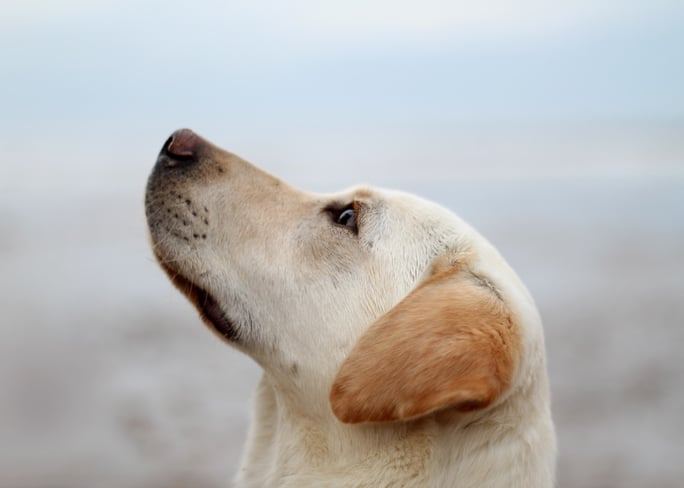Should Pets Be Tranquilized or Sedated For Air Travel?
Published on: July 19, 2023 | Author: Starwood Pet Travel

A commonly asked question we receive relates to whether or not it is advisable to tranquilize or sedate your pet during air travel. Our answer is a resounding NO. However, we acknowledge that conflicting information exists, with some seemingly reputable online sources still suggesting sedation. This is precisely why we are committed to helping you distinguish between fact and fiction. In fact, we have a range of alternative suggestions that are far more effective than resorting to medication.
Why should you avoid tranquilizing your pet during air travel?
Tranquilizers put the brain to sleep, and for a long time, pet owners and professionals believed that sedating anxious dogs and cats was the best solution. However, extensive medical research has revealed the potential dangers that come with sedation. When your pet's brain is sedated, they are unable to think or process information normally. This can lead to confusion, anxiety, and even panic. They may also struggle to maintain their balance, putting them at a higher risk of injury during their journey. It's not just the brain that is affected by tranquilizers; they also reduce heart rate, respiration, and body temperature. This can be particularly dangerous for snub-nosed or brachycephalic breeds, as it can exacerbate their respiratory problems. Although rare, tranquilizers can also cause dehydration in animals.
As loving pet parents, we want to ensure the best possible travel experience for our furry friends. That's why the American Veterinary Medical Association strongly advises against using tranquilizers or sedatives. In fact, airlines won't even accept sedated or tranquilized dogs and cats. Many of them won't even knowingly accept a dog or cat that has been or appears to have been sedated.
It's important to note that if you choose to work with Starwood, our drivers are not authorized to administer any sedatives to your pet. Additionally, if we witness you administering a sedative in front of us, we may need to reschedule your pet's travel arrangements.
Fortunately, there are alternative solutions available to help calm your pet during travel.
Many dogs and cats have shown positive responses to various herbal stress relievers. However, it's important to remember that each animal is unique, and what works for one may not work for another. It's always recommended to consult with your veterinarian before trying any of these options. Veterinarians nowadays often prescribe herbal or alternative remedies for pets, so they can provide valuable guidance. Additionally, it's crucial to ensure that you administer the correct dosage to your dog or cat.
For example, chamomile is not only soothing for humans but also helps to reduce stress in animals. It has a calming effect on the brain without any harmful side effects. So, a cup of chamomile tea or dried chamomile flowers before travel might help your furry friend relax.
Valerian, another herb commonly used for insomnia in humans, is also recommended for both dogs and cats. It helps to alleviate tension and anxiety without affecting the brain.
The scent of lavender oil has also been found to be relaxing for dogs. However, it's important to note that you should only let your pet sniff the oil and avoid sprinkling it in their carrier to prevent ingestion.
It's essential to understand that holistic methods for calming your pet during travel are not quick fixes. Each pet responds differently, so it may take some time to determine the effectiveness of these alternative options. It's advisable to start using them at least a month before travel to observe any potential effects.
Preparing your pet for travel
Helping your furry friend feel at ease during their flight is crucial. They will encounter new sights, sounds, smells, and people on their journey, which can be overwhelming. By familiarizing them with as much as possible beforehand, you can make them feel more comfortable and confident. While you can't expose them to every aspect of air travel, there are steps you can take to boost their confidence.
Training your pet to be less fearful is a great way to start. Expose them to unfamiliar environments and reward them with positive reinforcement. However, the most important thing you can do is to help them feel comfortable in their travel crate. This will become their sanctuary during the journey, and recognizing it as their own space will help them stay calm. Don't forget to check out our Ultimate Guide to Stress-Free Flying for additional resources.
Remember to stay calm
Your furry companion relies on your demeanor and behavior to gauge their own emotions. The more stressed or anxious you appear, the more your four-legged friend will mirror those feelings. We understand that preparing for travel can be overwhelming, especially if you're moving or going abroad. The to-do list seems never-ending, but remember that your pets don't comprehend the reasons behind the chaos. It's up to you to lead the way and set a calm and composed example.
Take a few deep breaths to clear your mind (you'll likely need more than one), and strive for a Zen-like state amidst the hustle and bustle. Make a conscious effort to spend quality time with your pet, even if your schedule is packed, so they feel reassured that they are still your number one priority.
Starwood Animal Transport has rebranded to Starwood Pet Travel. We are still the same great company with the best team, just now with a slightly different name.
Subscribe to the Blog
Enjoy our content? Get them sent to your inbox!
Subscribe Now!


